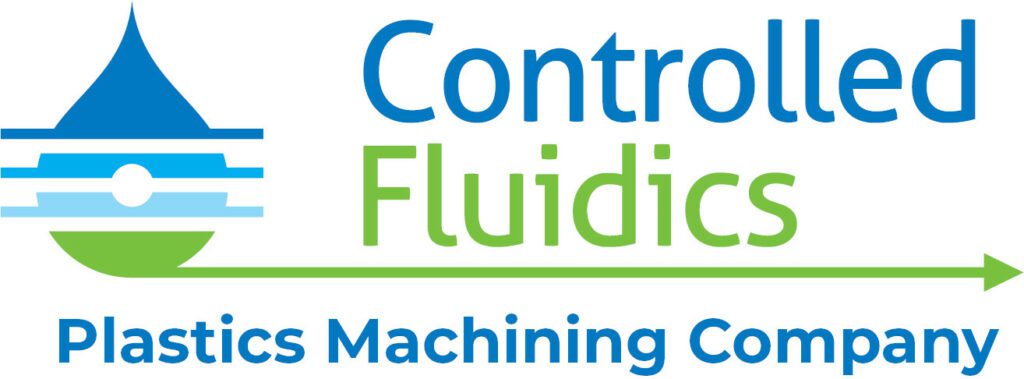Microfluidic Manifolds (Podcast)
In this podcast, Tom Rohlfs, principal engineer and president of Controlled Fluidics, explains microfluidic manifolds. He talks about when they're used, then provides an overview of manufacturing considerations and processes.
John Maher: Hi, I am John Maher. I'm here today with Tom Rohlfs, President and Principal Engineer at Controlled Fluidics, a plastics machining company specializing in precision manifolds. Our topic today is micro fluidic manifolds. Welcome, Tom.
Tom Rohlfs: Morning, John. Thanks for having me.
What Are Microfluidic Manifolds?
John: Sure. Tom, what are microfluidic manifolds?
Tom: In controlled fluidics, there's a lot of knowledge base out there about lab arm, chip type applications. At Controlled Fluidics, we define internally microfluidics as anything below half millimeter channel size. Anything down between what we can bond below half millimeter, we consider that microfluidics. It's a special process for us. It moves us out of our standard bonding equipment into specialized microfluidic bonding equipment.
We're capable of bonding down to a hundred micron by a hundred micron channels. Typically, for microfluidics requests from our customers, we're seeing square channel or D-shaped channel, single-sided channels, down to, as I said, about four thousands by four thousands in various plastics.
Which Industries Use Microfluidics?
John: Okay. Who are microfluidics made for? What types of industries or applications, generally?
Tom: As we've been talking about, life science is very much in that space where they're trying to use tiny amounts of reagents to... we have a customer who is actively involved in mRNA studies who has a microfluidic chip. They're using that, interestingly enough, to develop personalized medicine to help cure cancer. They're using these microfluidic chips to develop drugs for people, via the mRNA technology to cure cancer. Those are the types of applications that we're seeing out there.
John: In the advantage of micro fluidics, is it just the size that it can fit into a certain type of machine? What is it that they're using them for that that requires them to have it be of that size?
Tom: Yeah, so from what I understand, I don't get heavily involved in my customers' applications, but from what I understand, their ability to use very small amounts of chemicals. Sometimes, when they're operating just at the very cellular stage, they want to use tiny amounts of materials. That's able to really save money, save cost, save space.
Manufacturing Process for Microfluidics
John: Can you talk a little bit about the manufacturing process, or what's different about microfluidics versus other manifolds that you make?
Tom: Yeah. What's interesting about microfluidics is we see a lot of applications on the material side in either acrylic, which is common, but also in a material called COP or COC. COP is made by a company called Zeon Chemicals. COC is made by Topaz, and that's an upcoming life science material. It can be USP class six certified. It's very clear, so the researcher is able to image through it. It's low auto fluorescent, which means it doesn't shine when put under a UV light. It's also very chemically resistant.
This is one of the amorphous plastics, we've talked a little bit about that this morning, that's very good on the chemical resistance side. It's also very hard, so it doesn't scratch easily. We're seeing that as one of the most popular life science materials for the microfluidics side, because there's a lot of advantages in their space. It's also very friendly from a bonding perspective. We're able to really control our bonding process with it. It fits well in that space as a sort of upcoming material.
We're seeing it on the more of the meso scale as well, as more people are learning about it. It's a good replacement for ultem. We haven't talked much yet about it, but ultem is material that's considered best for chemical resistance in the amorphous plastics that we can bond. Well, COP is right there, and we're seeing more interest in that, especially because you then get a clear material as with autofluorescence, low autofluorescence.
Machining Microfluidic Manifolds
John: Anything else that's important for people to know about microfluidic manifolds?
Tom: Yeah, sure. We do a machining process. There's lots of ways to produce microfluidics. One of the common ones is embossing. That's not a process we use. We're strictly a machine shop. The nice thing about machining is we can create features and sizes that sometimes are more difficult on the embossing front. We just machine all our features.
We usually can hold tolerances to about half a thousandths 0.005 thousandths of an inch in accuracy. As you can imagine, if you have a channel that's only four thousandths in diameter, you have to have a fairly accurate size, or else your channel won't be the shape that you want it.
We're able to hold fairly close tolerances with good finishes. It's something that there's a need for on the machining front because it allows the customer to flex their design rapidly with machining, whereas once you're embossing, you tend to be locked into that design. You've built a dye to emboss. We fit into that space where customers are looking for flexibility and design, being able to iterate, being able to order small quantities, and then iterate on their design until they can dial in for their application.
Contact Controlled Fluidics to Learn More
John: All right, well that's really great information, Tom. Thanks again for speaking with me today.
Tom: You're welcome.
John: For more information, you can visit the website at ControlledFluidics.com, or call 603-673-4323.
